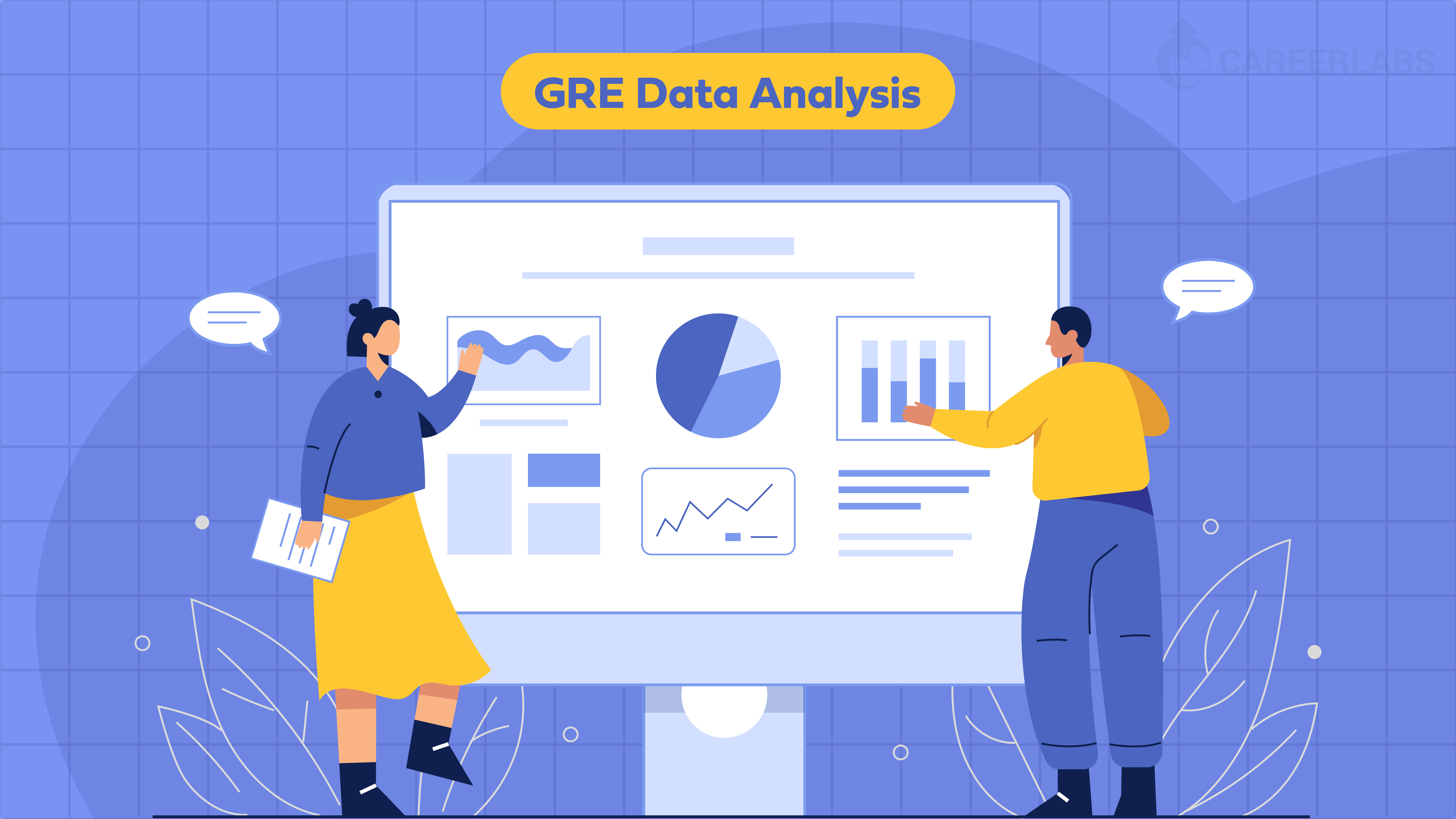How to Read a Gre Bar Graph

The GRE Information Analysis topic, which is also known equally Data Interpretation, constitutes fifteen% of the entire math section. You are certain to run into at least half-dozen data analysis questions out of the total 40 questions. A major reward of the GRE information analysis questions is that you don't require whatsoever cognition nearly it beforehand. All you have to do is extract data from the given visual and then apply the same to the questions which follow.
The information analysis questions may be given to you in many formats. Some of them are — charts, tables, graphs, or extrapolating information from a reading passage. Information technology is important for yous to understand all the ways to translate and analyse the data so that yous score well in this section of the exam. Some important tips and strategies for solving questions in this section are given below.
GRE Data Analysis Tips and Strategies
- Spend time to examine the graph, bar, chart or table.
- Read the passage with extra care before you go along to look at the questions.
- You will accept to exist on the lookout for identical patterns or figures.
- Ensure that you have notes and do the math conspicuously.
- Most of the graphical representations such as the line graphs, bar graphs will be displayed with scale information. Yous must read, estimate and compare quantities according to the respective scales.
- You are expected to answer the questions just on the basis of the data which you take been provided. Yous must not make any assumptions with the knowledge that you accept, etc.
- Learn the art of approximation and exist careful when handling percentages with information interpretation questions.
GRE Information Analysis – Types of Questions
The different types of GRE data interpretation questions are discussed in-depth below :
- Cavalcade/Bar Charts – These are ane of the most of import graphs amongst the data interpretation questions. Likewise referred to equally Bar charts, these accept an illustration with rectangular bars with lengths respective to the values they represent. It can be plotted vertically or horizontally. The bar charts can be segmented farther into categories on each bar or on equal height columns where each segment could represent a pct. Below is an instance of a column chart:
The above column chart shows the number of episodes that were produced for each season of the popular American Idiot box show 'Entourage'.
- Line Charts – The line charts are usually used to describe the progress between two quantities. For example the population charge per unit between two countries, the aggrandizement rate in the terminal ii quarters, etc. Below is an case of a line chart:
The above line nautical chart shows how alike the curves are for the increase in the number of air travel passengers predicted until the year 2015, and the actual increase in the number of air travel passengers.
- Pie Charts – These remain the most pop type of data interpretation questions in the GRE test. The pie graph is too termed equally a circle graph due to its shape and is divided into sectors. Each of these sectors announce measures of a quantity, which would be defined in the question itself. The key factor of the pie nautical chart is that y'all would empathise the data or information given in it very hands since information technology is straightforward. Below is an example of a pie chart:
The higher up pie nautical chart shows how much certain spider web browsers are used as compared to others. As you can see, Internet Explorer seems to be the most pop one according to this chart.
- Box and Scatter Plots – These types of graphs are not often seen in the GRE test. They are also a scrap more difficult to encompass when compared to the other types of graphs. They are useful to display bivariate information (measures of two dissimilar variables measured on the same set of individuals). For example: income and expenditure of individuals or pinnacle and weight of several persons on the same graph.
The in a higher place scatter plot shows the difference between the number of passengers that chose Airbus as compared to the number of passengers that chose Boeing.
Finally, information technology is always easier to interpret data that is presented in a graph format than in long textual paragraphs. They assist you to learn the data in a brusque time period. This is what the GRE data analysis questions are aimed at evaluating in the exam. For your preparation, you can download some GRE data analysis practice questions online or from the ETS site.
We trust that this article has given you lot a brief overview of the various data assay topics.
FAQs
1.In which section does GRE Data Estimation come up?
GRE Data Interpretation or Data Analysis is a question type nether the GRE Quantitative Reasoning section.
2.How should I prepare for the Data Interpretation question type?
Kickoff, y'all must work on familiarising yourself with the various types of graphs and charts. Information technology is of import to be aware of how to read all the types of charts, as that is where most of the information will exist given. Make sure you lot practice questions related to this topic, and read all the details and data given correctly and carefully. You should besides practice how to interpret a graph rapidly so every bit non to waste time during the exam.
3.How many data analysis questions will exist asked on the GRE?
Each Quant subsection volition have three data analysis questions, which makes it a full of 6 questions in total.
Prepare well! Practiced Luck!
Source: https://thecareerlabs.com/free-gre-prep/gre-data-analysis/
0 Response to "How to Read a Gre Bar Graph"
Publicar un comentario